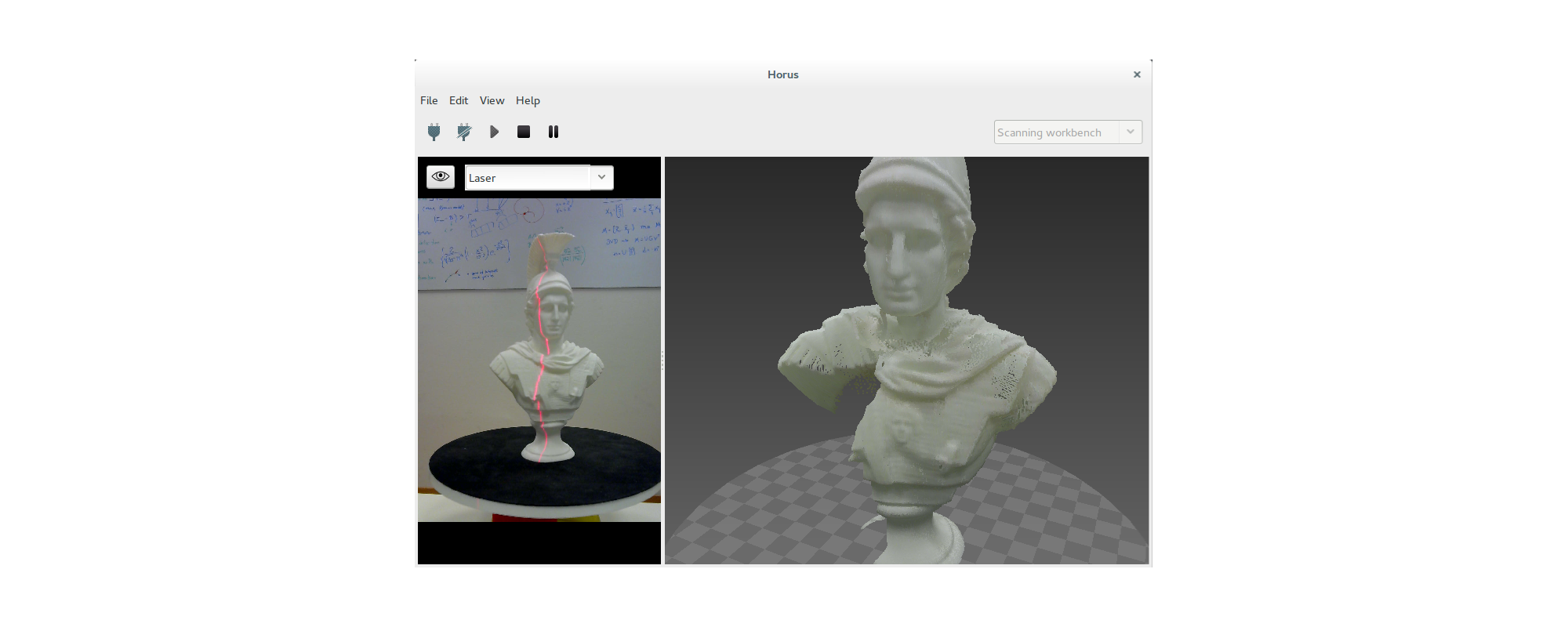Scanning process¶
In this article is explained the algorithm used to scan an object with a 3D laser scanner over a turntable.

Complete algorithm¶
The algorithms consists on capture "line point clouds" for each angle of the platform, from 0 to 360 degrees.
This is the process for each iteration:
Capture texture: sets texture camera settings and captures an image in order to include the color of the scanned object.
Capture lasers: sets laser camera settings and captures the correspondent images for the selected lasers.
Laser segmentation: from laser image captures, 2d points are obtained using laser segmentation.
Point cloud generation: from 2d points and all calibration parameters final point cloud in world coordinate system is obtained using point cloud generation.
Finally, all the "line point clouds" computed are merged into a common final point cloud.
Time cost¶
Motor movement¶
Total time of motor movement can be obtained using v, the motor speed, and a the motor acceleration. It can be defined two possible situations, depending also on the step S. Tl=2·vmaxaSl=v2maxa
S<Sl¶
Maximum speed is not reached. Total time only depends on displacement and acceleration. T=2√Sa
S>Sl¶
Maximum speed is reached. Total time has a new expression. T=S+Sla
Image capture¶
Experimentally, it is determined that each image costs 66 ms to be captured. Also, flip, transpose and format color conversion increases 4 ms, 5 ms and 2.5 ms respectively.